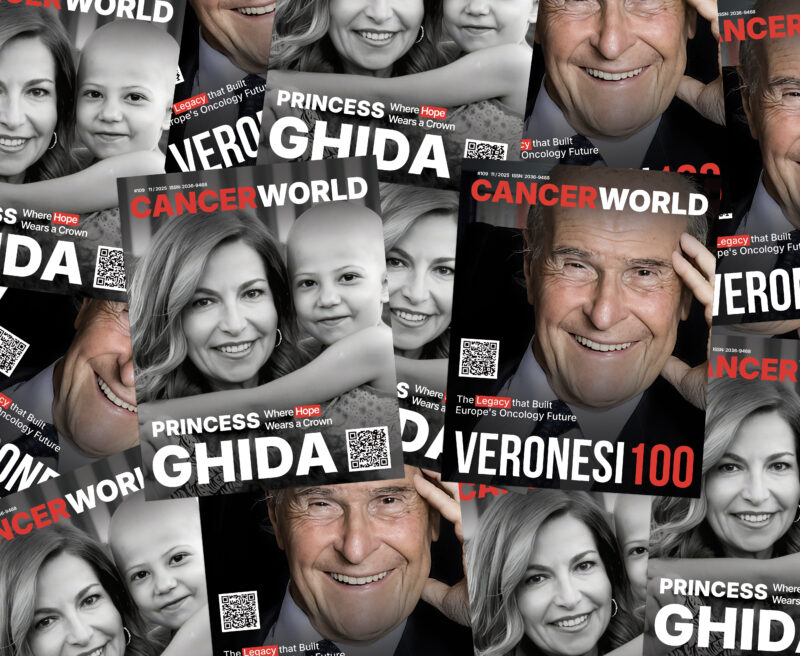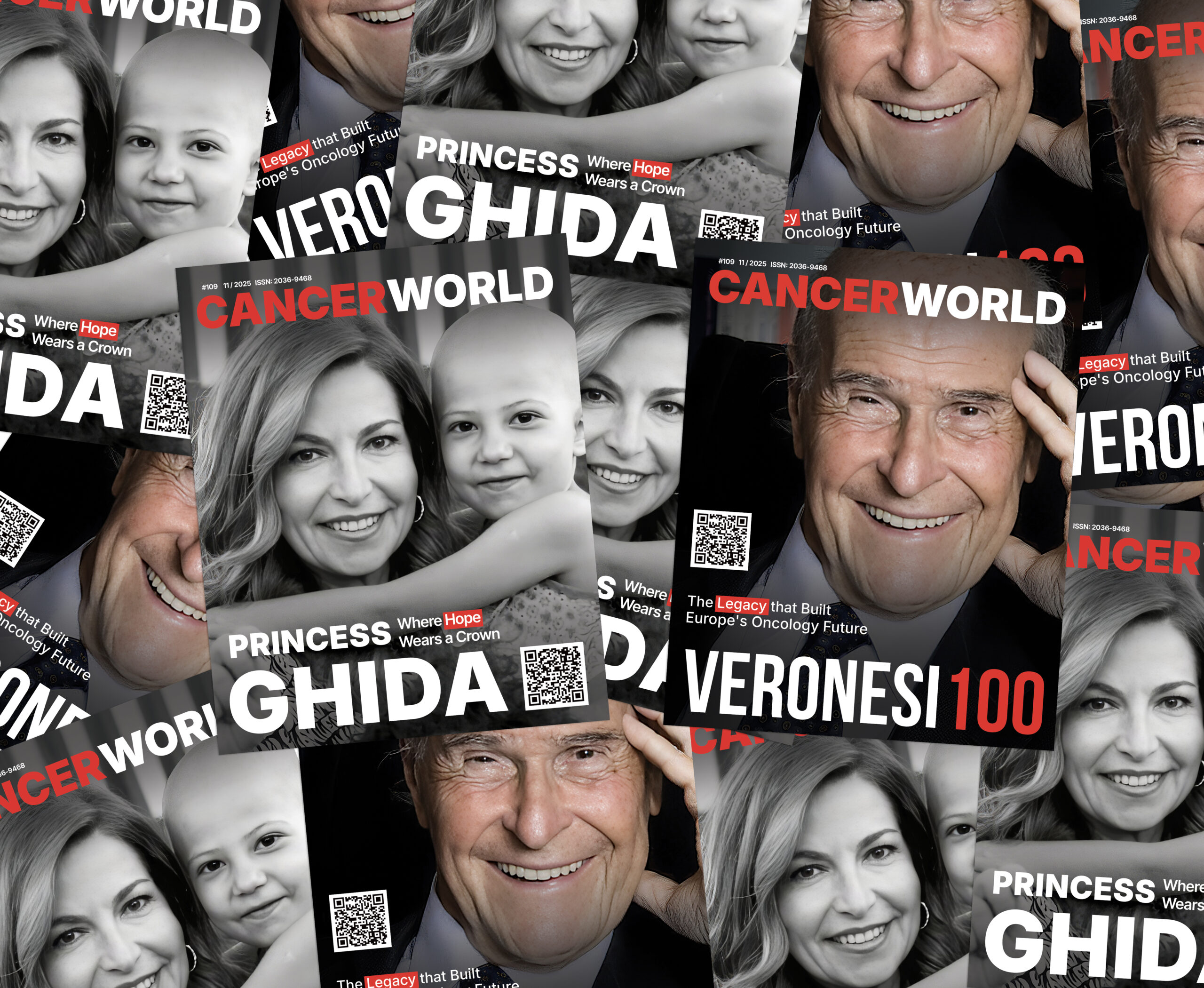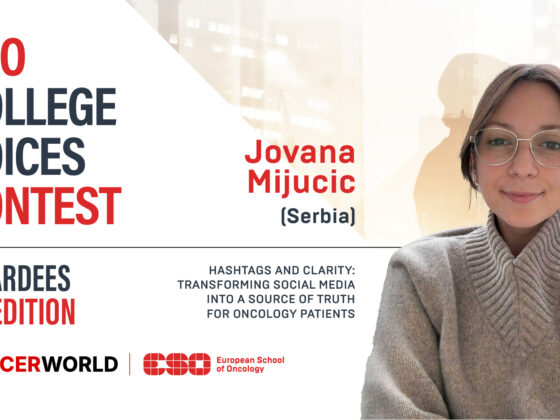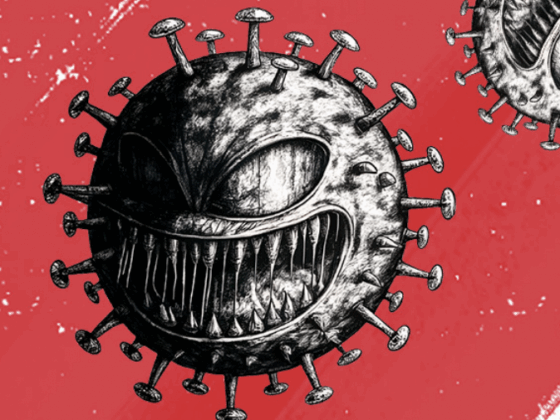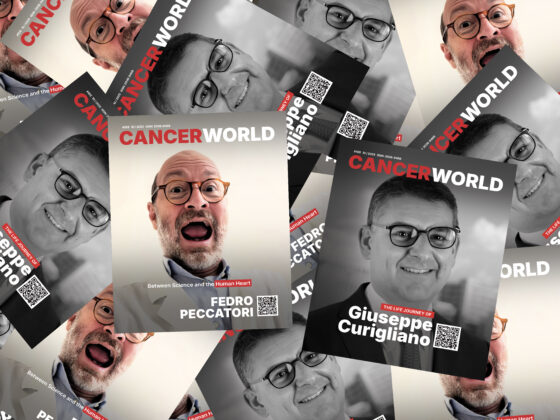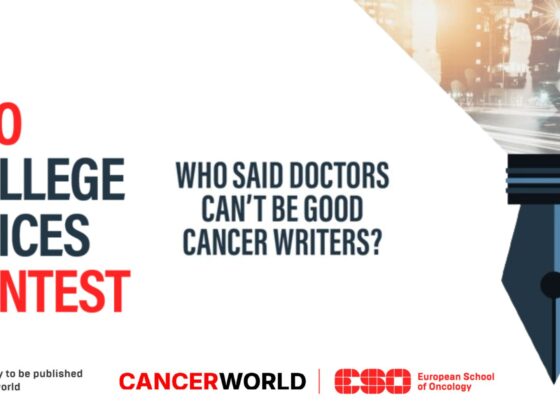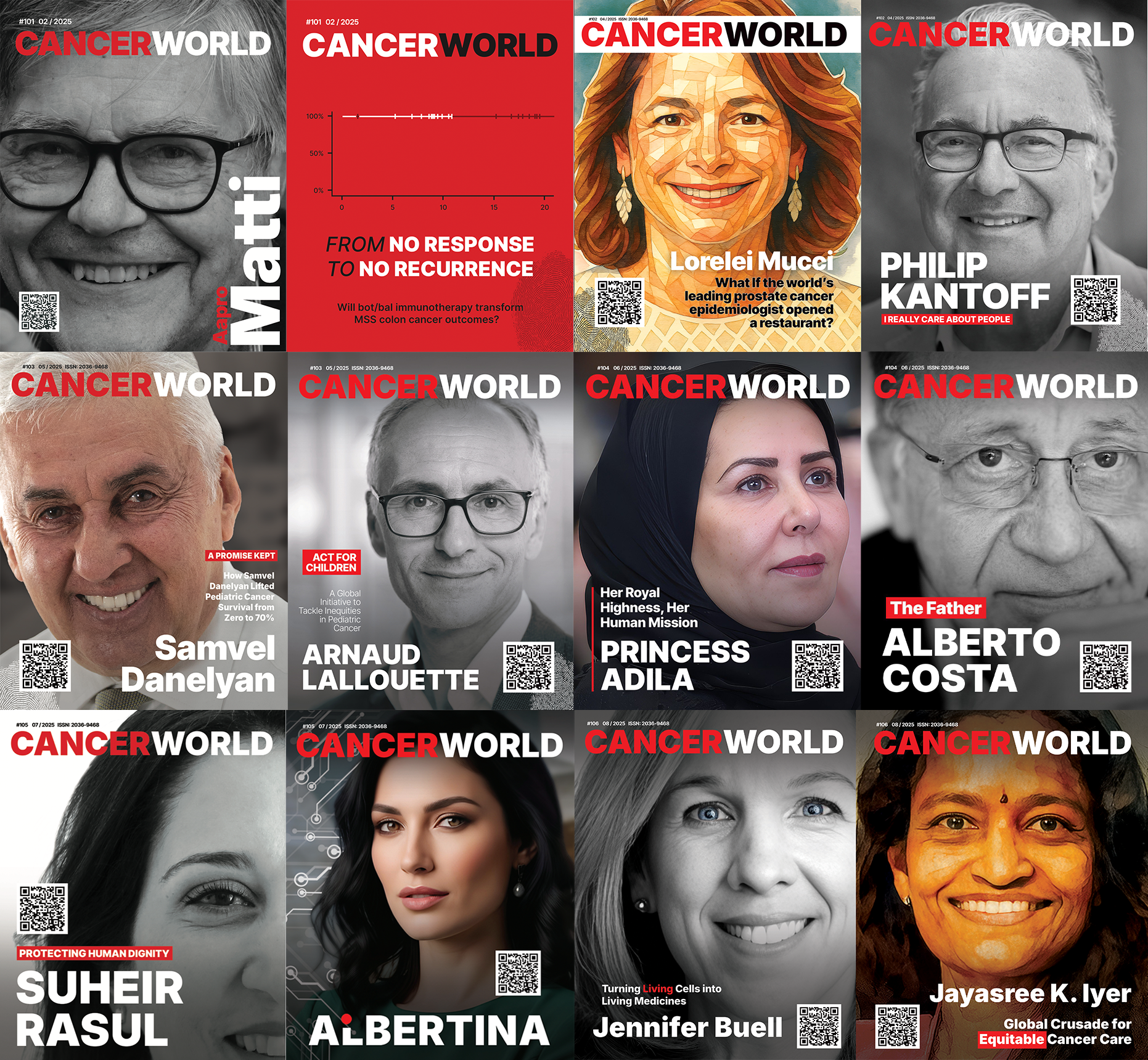Where leadership, legacy, and discovery meet the future of care
Every issue of CancerWorld tells a story about connection, between science and humanity, between personal courage and collective change. The November edition celebrates those who lead with conviction, those who innovate with purpose, and those who remind us that progress in oncology is measured not only in survival rates but in the quality of the lives they restore.
We open with two cover stories that mirror each other across continents and generations.
HRH Princess Ghida Talal of Jordan transforms personal tragedy into public mission, leading the King Hussein Cancer Foundation and Center with the conviction that access to care is a human right.
Our next cover story explores the legacy of Prof. Umberto Veronesi, whose founding of the European School of Oncology more than four decades ago built a bridge between knowledge and compassion. His belief that medicine must be taught as a human science remains ESO’s compass today. As the School approaches its 50th anniversary, it continues to embody Prof. Veronesi’s guiding principle, that learning to care is as essential as learning to cure.
MEP Tilly Metz anchors this issue’s policy focus with the three pillars of cancer policy: prevent, treat, support. She calls for a Europe where prevention stands alongside treatment and survivorship, where environmental health, HPV elimination, and equity are central to the Beating Cancer Plan.
Science and innovation are everywhere in this issue, not as abstractions, but as tools that bring care closer to the people who need it most. Research on the oral microbiome reveals that 27 bacterial and fungal species found in the mouth are linked to a higher risk of pancreatic cancer, hinting at a future where a simple mouth rinse might one day help identify risk early enough to save lives. In Sweden, a team at Lund University has trained an AI model on mammograms that can identify patients who could safely skip sentinel lymph node biopsy, sparing up to 40 percent of women from unnecessary axillary surgery.
That same spirit of technological partnership drives the reflections of Amil Družić, who explores how artificial intelligence is reshaping oncology practice, not by replacing doctors, but by amplifying their insight.
The story of innovation continues with Prof. Ludmil Alexandrov, the man decoding the origins of cancer. By mapping mutational signatures that reveal the fingerprints of causes such as tobacco or UV exposure, Alexandrov is transforming how we understand prevention itself.
We also take you to the Uganda Cancer Institute, where clinicians Dr. Anthony Kayiira and Dr. Joyce Balagadde Kambugu are pioneering fertility preservation services for young patients, proving that even in resource-limited settings, survivorship must mean living fully after cure.
Elsewhere, Shrenik Shah reminds us that life after cancer is as much about voice as it is about survival. Diagnosed with stage IV laryngeal cancer, he lost his natural voice but found a stronger one, the voice of advocacy, resilience, and purpose. Through technology, he speaks again, not just for himself but for countless survivors reclaiming identity after silence.
And as survivors return to work, they face another test, the quiet discrimination that lingers long after treatment ends. Legislation such as the “right to be forgotten” marks progress, but culture still dictates whether survivors are welcomed back or written off.
In every corner of this issue, hope does not simply survive; it evolves. It wears many faces: a crown, a parliament, a laboratory, a hospital ward, all united by one enduring conviction that learning to care remains the truest form of progress.

